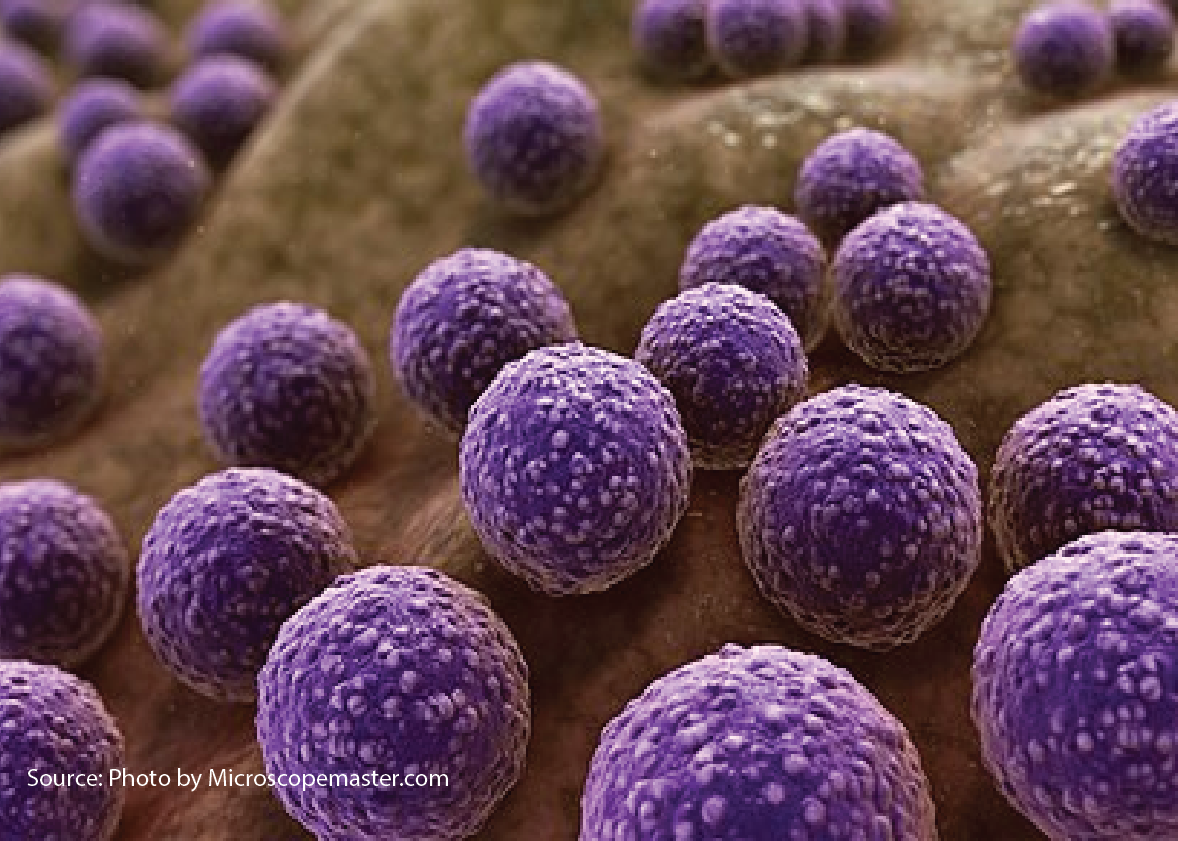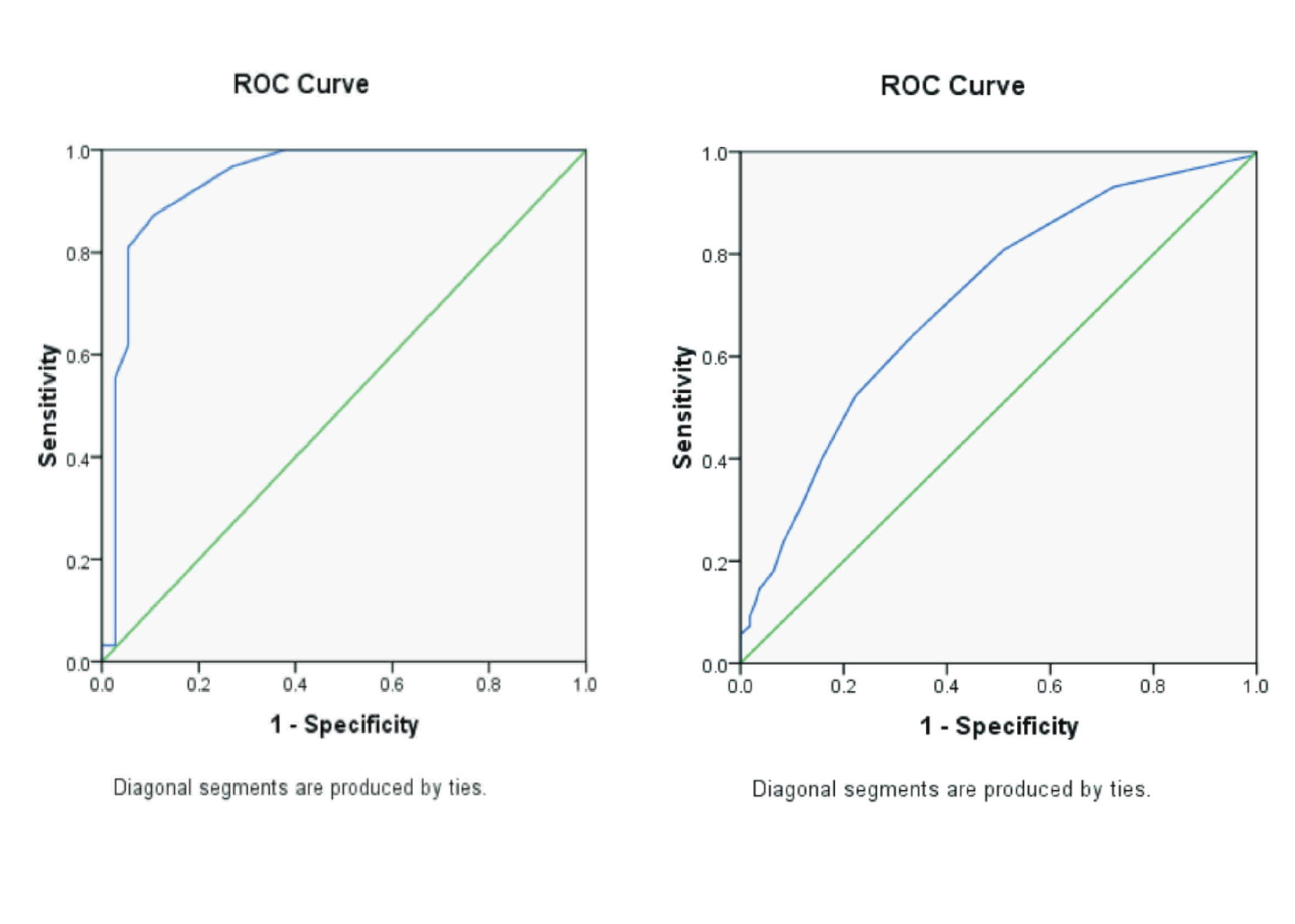INHIBITION OF METHICILLIN-RESISTANT STAPHYLOCOCCUS AUREUS (MRSA) BIOFILM: THE ESSENTIAL ROLE AND POTENTIAL USAGE OF BACTERIOCINS

Downloads
Background: The potential of Methicillin-Resistant Staphylococcus aureus (MRSA) to develop biofilms and its resistance to antibiotics become major worldwide issue. Complementary anti-microbial strategies have been used recently, in particular for the treatment of MRSA biofilm-associated resistance. Purpose: To review the potential, essential role, and mechanism of bacteriocin that can inhibit MRSA biofilms. The review was conducted by searching and analyzing published articles from Elsevier, ProQuest and PubMed database. Review: Globally, the incidence of MRSA in 85 countries based on WHO surveillance reaches more than 20%. Biofilm, as one of the virulence factors of MRSA, can result in the failure of antibiotic therapy. According to reports, bacteriocins, such as peptides synthesized by Gram-negative and Gram-positive bacteria, have antimicrobial activity that has the potential to inhibit antibiotic-resistant pathogens and biofilms formed by MRSA. Result: The bacteriostatic and bactericidal activity of bacteriocins against MRSA has been shown through research across several countries on the usage of bacteriocins, which was isolated from different types of bacteria against MRSA biofilms. Bacteriocins contribute to the inhibition of MRSA biofilms by inhibiting the synthesis of cell walls, leading to pores in the cytoplasmic membranes of bacterial cells, interrupting the synthesis of extracellular membranes, disrupting cell membranes, and reducing the number of planktonic cells within MRSA biofilms. Conclusion: Bacteriocins have an effective mechanism for treating MRSA biofilms with low toxicity and risk of resistance, hence they are safe to be developed as complementary components to antibiotics in an effort to treat MRSA biofilms.
Ahire, J.J., Dicks, L.M.T., 2015. Nisin Incorporated with 2,3-Dihydroxybenzoic Acid in Nanofibers Inhibits Biofilm Formation by A Methicillin-Resistant Strain of Staphylococcus aureus. Probiotics Antimicrob Proteins Vol. 7(1), Pp. 52-59.
Al-Seraih, A., Belguesmia, Y., Baah, J., Szunerits, S., Boukherroub, R., Drider, D., 2017. Enterocin B3A-B3B Produced by LAB Collected from Infant Faeces: Potential Utilization in The Food Industry for Listeria Monocytogenes Biofilm Management. Antonie Van Leeuwenhoek Vol. 110(2), Pp. 205-219.
Al Atya, A.K.A., Belguesmia, Y., Chataigne, G., Ravallec, R., Vachée, A., Szunerits, S., Boukherroub, R., Drider, D., 2016. Anti-MRSA Activities of Enterocins DD28 and DD93 and Evidences on Their Role in the Inhibition of Biofilm Formation. Frontiers in Microbiology Vol. 7.
Belguesmia, Y., Spano, G., Drider, D., 2021. Potentiating Effects of Leaderless Enterocin DD14 in Combination with Methicillin on Clinical Methicillin-Resistant Staphylococcus aureus S1 Strain. Microbiol Res Vol. 252, 126864.
Brooks, B., Rolland, D., 2013. Wet or Dry? The Need for Both Dental Milling Machines.
Caballero Gómez, N., Abriouel, H., Grande, M.J., Pérez Pulido, R., Gálvez, A., 2013. Combined Treatments of Enterocin AS-48 With Biocides to Improve The Inactivation of Methicillin-Sensitive and Methicillin-Resistant Staphylococcus Aureus Planktonic and Sessile Cells. International Journal of Food Microbiology Vol. 163(2), Pp. 96-100.
Curtis, T.M., Hannett, J.M., Harman, R.M., Puoplo, N.A., Van de Walle, G.R., 2018. The Secretome of Adipose-Derived Mesenchymal Stem Cells Protects SH-SY5Y Cells from Arsenic-Induced Toxicity, Independent of A Neuron-Like Differentiation Mechanism. Neurotoxicology Vol. 67, Pp. 54-64.
Du, H., Zhou, L., Lu, Z., Bie, X., Zhao, H., Niu, Y.D., Lu, F., 2020. Transcriptomic and Proteomic Profiling Response of Methicillin-Resistant Staphylococcus aureus (MRSA) to A Novel Bacteriocin, Plantaricin GZ1-27 and Its Inhibition of Biofilm Formation. Appl Microbiol Biotechnol Vol. 104(18), Pp. 7957-7970.
Fetsch, A., 2018. Staphylococcus aureus. Elsevier Science, London, Unikted Kingdom.
Field, D., Pérez-Ibarreche, M., Ross, R.P., Hill, C., 2015. A Bioengineered Nisin Derivative to Control Streptococcus uberis Biofilms - PubMed. Applied and Environmental Microbiology Vol. 87(16), Pp. e0039121.
Karczewski, J., Brown, C.M., Maezato, Y., Krasucki, S.P., Streatfield, S.J., 2021. Efficacy of A Novel lantibiotic, CMB001, Against MRSA. J Antimicrob Chemother Vol. 76(6), Pp. 1532-1538.
Kourtis, A.P., 2019. Vital Signs: Epidemiology and Recent Trends in Methicillin-Resistant and in Methicillin-Susceptible Staphylococcus aureus Bloodstream Infections — United States. MMWR Morb Mortal Wkly Rep Vol. 68(9), Pp. 214-219.
Kranjec, C., Ovchinnikov, K.V., Grønseth, T., Ebineshan, K., Srikantam, A., Diep, D.B., 2020. A Bacteriocin-based Antimicrobial Formulation to Effectively Disrupt the Cell Viability of Methicillin-Resistant Staphylococcus aureus (MRSA) Biofilms. NPJ Biofilms Microbiomes Vol. 6(1), Pp. 1-13.
Liu, S., Deng, S., Liu, H., Tang, L., Wang, M., Xin, B., Li, F., 2022. Four Novel Leaderless Bacteriocins, Bacin A1, A2, A3, and A4 Exhibit Potent Antimicrobial and Antibiofilm Activities against Methicillin-Resistant Staphylococcus aureus. Microbiology Spectrum Vol. 10(5).
Moormeier, D.E., Bayles, K.W., 2017. Staphylococcus aureus Biofilm: A Complex Developmental Organism. Mol Microbiol Vol. 104(3), Pp. 365-376.
Nithya, S., Nimal, T.R., Baranwal, G., Suresh, M.K., C.p., A., Anil Kumar, V., Gopi Mohan, C., Jayakumar, R., Biswas, R., 2018. Preparation, characterization and efficacy of lysostaphin-chitosan gel against Staphylococcus aureus. International Journal of Biological Macromolecules, Biological Macromolecules for Delivery, Imaging & Therapy (BMDIT-2018) Vol. 110, Pp. 157-166.
Nour El-Din, H.T., Elhosseiny, N.M., El-Gendy, M.A., Mahmoud, A.A., Hussein, M.M.M., Attia, A.S., 2020. A Rapid Lysostaphin Production Approach and a Convenient Novel Lysostaphin Loaded Nano-emulgel; As a Sustainable Low-Cost Methicillin-Resistant Staphylococcus aureus Combating Platform. Biomolecules Vol. 10(3), Pp. 435.
Okuda, K., Zendo, T., Sugimoto, S., Iwase, T., Tajima, A., Yamada, S., Sonomoto, K., Mizunoe, Y., 2013. Effects of Bacteriocins on Methicillin-Resistant Staphylococcus aureus Biofilm. Antimicrob Agents Chemother Vol. 57(11), Pp. 5572-5579.
Ray, R.R., Nag, M., Lahiri, D., 2021. Biofilm-Mediated Diseases: Causes and Controls. Springer Nature, Singapore.
Santos, A.C.D., Conley, A.J., Oliveira, M.F. de, Oliveira, G.B., Viana, D.C., Neto, A.C. de A., 2019. Immunolocalization of Steroidogenic Enzymes in The Vaginal Mucous of Galea Spixii during The Estrous Cycle. Reproductive Biology and Endocrinology Vol. 15(1), Pp. 30.
Siddiqui, A.H., Koirala, J., 2022. Methicillin-Resistant Staphylococcus aureus. In: StatPearls. StatPearls Publishing, Treasure Island (FL).
Thapa, R.K., Winther-Larsen, H.C., Ovchinnikov, K., Carlsen, H., Diep, D.B., Tønnesen, H.H., 2021. Hybrid Hydrogels for Bacteriocin Delivery to Infected wounds. European Journal of Pharmaceutical Sciences 166, Pp. 105990.
Velázquez-Suárez, C., Cebrián, R., Gasca-Capote, C., Sorlózano-Puerto, A., Gutiérrez-Fernández, J., Martínez-Bueno, M., Maqueda, M., Valdivia, E., 2021. Antimicrobial Activity of the Circular Bacteriocin AS-48 against Clinical Multidrug-Resistant Staphylococcus aureus. Antibiotics (Basel) Vol. 10(8), Pp. 925.
WHO, 2017. WHO Publishes list of Bacteria for which New Antibiotics are Urgently Needed. URL https://www.who.int/news/item/27-02-2017-who-publishes-list-of-bacteria-for-which-new-antibiotics-are-urgently-needed (accessed 1.31.24).
Willey, J., 2022. Prescott’s Microbiology. McGraw Hill Education, New York, NY, USA.
Copyright (c) 2024 Journal of Vocational Health Studies

This work is licensed under a Creative Commons Attribution-NonCommercial-ShareAlike 4.0 International License.
- The authors agree to transfer the transfer copyright of the article to the Journal of Vocational Health Studies (JVHS) effective if and when the paper is accepted for publication.
- Legal formal aspect of journal publication accessibility refers to Creative Commons Attribution-NonCommercial-ShareAlike (CC BY-NC-SA), implies that publication can be used for non-commercial purposes in its original form.
- Every publications (printed/electronic) are open access for educational purposes, research, and library. Other that the aims mentioned above, editorial board is not responsible for copyright violation.
Journal of Vocational Health Studies is licensed under a Creative Commons Attribution-NonCommercial-ShareAlike 4.0 International License














































